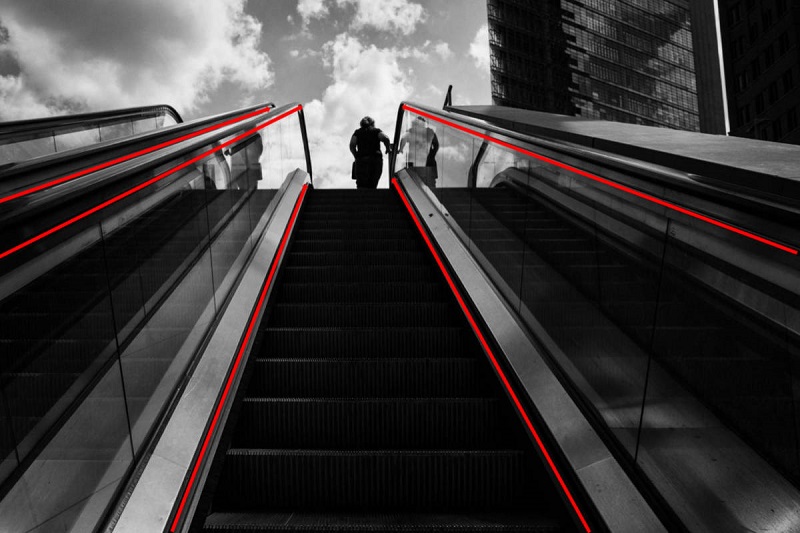
25 Apr What makes a good photograph?
If you see a person in the viewfinder, forget it. It is his thought that you must portray. Someone said this about a “nice photo “. Because just as there is no instruction manual for taking a beautiful photograph, at the same time, there is no form that suggests which is the winning subject or the right moment to capture. It is a question of emotional flair, content, poetry, and soul that must be transposed onto paper.
What makes a good photograph?
A beautiful image can also be objectively ugly, not entirely correct from a technical point of view, yet exciting. Those that are commonly defined “” errors “” in the field of photography can also turn into merits or even stylistic choices. And then you may be wondering: how to try to put something so that by definition is not ordered?
There are points of view from which you can take inspiration to enrich your visual sensitivity, educating it to the concept of “beauty”. Read on and get some tips that will be very useful for you to practice.
1. BEAUTIFUL OR NOT BEAUTIFUL: THIS IS THE PROBLEM
On beauty, philosophers, writers, musicians, painters, even mathematicians have questioned themselves. It is a concept that embraces humanistic and scientific disciplines, adults and children, simply for one reason: beauty is daily emotion.
Every day we are surrounded by visual stimuli that we consider pleasant, sensational, or of little importance. The Greeks tried to create the ideal beauty, and although some recognize the perfection of their sculptures, it leaves them nothing but a pleasant vision. For others, however, the harmony of those proportions becomes sublime and excites them a lot.
But what do you consider beauty? Because here is the heart of the matter. Have you ever wondered, even before broadcasting it in one shot, what does it mean to you? No one must share beauty, which will not make it any less beautiful, as long as you consider it to be so. If you’re willing to defend a shot because it’s right for you, you’ve found the winning spirit.
2. ENDLESS POSSIBILITIES: WHICH TO SUPPORT?
A photographer has a fortune that he sometimes forgets: there is no limit to his possibilities. Everyday life, places, people, atmospheric events, places, expressions, time. All features can be stopped in a “click.” But this can be a double-edged sword because if it creates infinite possibilities, on the other, you don’t know where to start.
I intrude on the article to give you some news. You may already know this, but I have a dedicated channel that you can follow to stay updated on the various contents that I will publish, with weekly summaries and maybe even with my voice interventions if I find something interesting to report to you. There is also a linked group where you can reply and comment on how public they are or stay in touch with other members! If you are interested, click here to go immediately to my Telegram channel.
Not sure which options to choose? Choose them all. Try to spend a day of furious creativity, play with your goal, but give yourself some rules. Otherwise, you risk creating everything and not creating anything.
3. A PHOTOGRAPHER COLLABORATES WITH THE SUN
“Photography is an art; indeed, it is more than an art, it is the solar phenomenon in which the artist collaborates with the sun”. When Alphonse de Lamartine uttered this phrase, he meant a very simple concept: a photographer’s best ally is light.
When we talk about light in photography, we don’t necessarily have to mean something clear. Even if it is natural to do so, it is a common mistake. Caravaggio made his fortune with dim light. He painted darkness with light, not light with darkness. Referring to lighting in the photographic field means creating a way to make the light give the desired effect to your subject.
4. THE GOLDEN SECTION: A HELP FOR COMPOSITION
Never forget that no matter how much technology has helped photography a lot, it always remains support and not a foundation to rely on. In a traditional shot, the format of a photograph in the lens is always square and, in some circumstances, rectangular, but never round or triangular.
The golden ratio helps every photographer in the first few shots. It is a mathematical method, also called “divine proportion”. It is a very particular spiral that, placed horizontally and flipped above and below, and vertically helps the photographer understand the rules of composition.
If you never know where to put your subject, if you can’t identify the position if you can’t figure out whether to center it or leave it to the side, help yourself with the golden ratio. Imagine it is within your screen, suppose its perimeter in your lens, carefully visualize the subject within this pattern and move accordingly to follow its boundaries.
5. DOES TECHNOLOGY HELP BEAUTY OR DESTROY IT?
Anyone can take a photo today. But a beautiful photo, today, cannot be taken by anyone. Having a tool in your hand that allows you to take pictures is not the same as knowing how to tell them. Technology, for this reason, is very risky. He gave an access card to anyone, whereas previously there was no possibility. It would also be wrong not to admit its usefulness, but when it acts as a help, not as a foundation.
When you take a photo, don’t think, “I’ll edit it anyway,” because that post-production modification will make your photo fiction, a reworking, the result of the content that is not pure. Rather use it when you have taken a great photo if something unexpected has occurred.
But going to act on the entire photograph, showing the medieval Cathedral only at a later time in all its majesty to underline the message of architectural grandeur, will not be creativity but fiction. The attentive eyes, those who choose to observe with the heart, will always notice a shot that is not pure.
The images speak even before you give them the word, for this reason, a good photographer should allow the technology to be there, but with the necessary and famous pliers.


No Comments